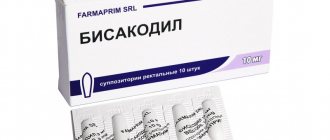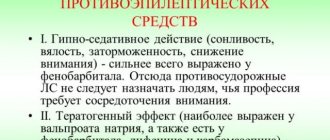Pharmacological properties
Pharmacodynamics
Zopiclone is a hypnotic from the group of cyclopyrrolone derivatives, a non-benzodiazepine benzodiazepine receptor agonist. It also has a sedative, anxiolytic, central muscle relaxant, anticonvulsant and amnestic effect.
Zopiclone, like benzodiazepine derivatives, enhances GABAergic processes in the brain (when interacting with benzodiazepine receptors). This leads to increased sensitivity of GABA receptors to the mediator. However, the substance is thought to interact with different sites on the benzodiazepine receptor than benzodiazepines.
Features of the effect of zopiclone on sleep: a decrease in the time it takes to fall asleep, a decrease in the number of night awakenings, an increase in the total duration of sleep. It has virtually no effect on sleep structure and does not significantly reduce the amount of REM sleep. The consequences of using the drug upon awakening are absent or only slightly expressed. Repeated doses of the drug are not accompanied by accumulation.
Pharmacokinetics
Zopiclone is quickly and completely absorbed from the gastrointestinal tract. Cmax (maximum concentration of the substance) is achieved in 1–3 hours. Easily penetrates histohematic barriers, including the blood-brain barrier, and spreads throughout organs and tissues, including the brain. The half-life ranges from 5.5 to 6 hours; does not accumulate.
Overdose
An overdose of the drug occurs when the recommended average therapeutic doses of the drug are exceeded and can threaten the patient’s life. As a rule, in case of overdose, depression of the central nervous system occurs. Signs of overdose include a lethargic state of the patient, as well as drowsiness , confusion , respiratory depression, ataxia , hypotension and hypotension .
If no more than an hour has passed since taking the drug, you can induce vomiting in the patient. In other cases, gastric lavage should be performed immediately, paying special attention to respiratory protection. In order to reduce the absorption of zopiclone contained in the drug, patients are prescribed activated charcoal .
Zopiclone, instructions for use: method and dosage
Zopiclone tablets are taken orally, in 1 dose, shortly before bedtime.
The recommended adult daily dose is 7.5 mg (1 tablet). Against the background of severe or persistent insomnia, it can be increased by 2 times.
For elderly patients, it is recommended to start therapy with a minimum dose of 3.75 mg (0.5 tablets); if there is insufficient effectiveness and in the absence of side effects, it may be increased.
Patients with functional renal impairment do not require dosage adjustment. In case of severe liver failure, the drug should be taken in a daily dose of 3.75 mg.
Contraindications
Absolute contraindications include:
- hypersensitivity;
- pregnancy;
- respiratory failure;
- age under 18 years;
- lactation.
In addition, patients with liver failure , apnea syndrome , galactose and glucose malabsorption, congenital galactosemia , myasthenia gravis , and lactase deficiency .
Side effects
When the drug is used in recommended doses, therapy is usually well tolerated, and post-somnia disorders develop infrequently.
During treatment you may experience:
- Very common: mild metallic or bitter taste in the mouth;
- Rarely: gastrointestinal disorders (in the form of nausea, vomiting), mental disorders (in the form of irritability, confusion, depressed mood);
- Very rare: allergic reactions (in the form of urticaria, rash).
Upon awakening, drowsiness may develop, and occasionally dizziness and impaired coordination of movements.
Description of the drug
Zopiclone is a sleeping pill from the cyclopyrrolone group. The medication is characterized by the following actions:
- sedative;
- hypnotic;
- tranquilizing;
- anticonvulsant;
- muscle relaxant.
Sleeping pills are related to a new class of psychotropic drugs. The drug quickly induces sleep in the patient, and at the same time does not reduce the part of REM sleep in its structure.
The drug is characterized by rapid half-life from the body. Usually cleared within 3-6 hours. The drug differs from other drugs with a similar effect in that it does not cause a feeling of weakness and severe drowsiness.
Taking the medication allows you to shorten the period of falling asleep and reduces the number of night awakenings. The quality of sleep improves significantly. Shows a special result for situational insomnia, which is accompanied by psycho-emotional stress. Sleep comes within 20 minutes after taking it.
special instructions
During therapy, alcohol and depressant psychotropic drugs should be avoided.
Abrupt cessation of treatment does not cause withdrawal syndrome.
When using Zopiclone against the background of myasthenia gravis, due to a possible increase in muscle weakness, strict neurological control should be established over the patient's condition.
The duration of the course should not exceed 4 weeks.
Impact on the ability to drive vehicles and complex mechanisms
Due to the likelihood of developing dizziness and impaired coordination of movements the day after taking Zopiclone, you should drive a car and perform potentially dangerous work with caution.
Zopiclone-FT
- Whenever possible, the cause of insomnia should be determined and possible precipitating factors should be eliminated before prescribing a sleeping pill. Benzodiazepines and benzodiazepine-like drugs are not prescribed as the main drugs in the treatment of psychosis. To reduce the risk of drug withdrawal symptoms, treatment with zopiclone should be short-term or intermittent. High-risk groups: - the greatest caution should be observed in cases where there is a history of alcoholism or addiction/dependence on other substances; - patients with impaired liver function, because benzodiazepines and benzodiazepine-like drugs in severe liver failure can accelerate the development of encephalopathy, so in this case they are contraindicated; - patients with respiratory failure, because benzodiazepines and their derivatives have a depressing effect on the respiratory center (restlessness and anxiety can be harbingers of respiratory decompensation); - elderly patients, because muscle relaxant and sedative effects may lead to injury due to falls.
Risk of addiction Treatment with benzodiazepines and their derivatives, especially long-term, even in therapeutic doses, can lead to physical and mental dependence. The risk of addiction increases in the presence of the following factors: - exceeding the recommended dose of zopiclone (7.5 mg); - increasing the duration of treatment (more than 4 weeks); - alcohol abuse and/or taking other psychotropic medications; - anxiety. If the patient has developed a physical dependence, then sudden cessation of taking ZOPICLONA-FT can lead to the development of withdrawal syndrome: headache, muscle pain, anxiety, restlessness, tension, irritability, confusion. In more severe cases, symptoms may include derealization, depersonalization, numbness and tingling in the extremities, increased sensitivity to light, noise and touch, hallucinations or epileptic seizures. After stopping treatment, withdrawal symptoms may appear within a few days. When treatment with ZOPICLONE-FT lasts no more than 4 weeks, the likelihood of developing withdrawal symptoms is minimal. It is recommended to discontinue the drug gradually.
Depression Benzodiazepines and benzodiazepine-like drugs should not be used in the monotherapy of depression or the treatment of anxiety caused by depression, as they may induce suicide.
Tolerance Some loss of effectiveness may occur with benzodiazepines and their derivatives after repeated use over several weeks. in patients taking zopiclone for no more than 4 weeks, cases of addiction were not observed. If tolerance develops, the dose of the drug cannot be increased.
The phenomenon of “recoil” When therapy with benzodiazepines and their derivatives is stopped in an intensified form, insomnia may resume, anxiety, restlessness, and mood changes may appear. The appearance of the syndrome is facilitated by long-term treatment or abrupt cessation of treatment. In this regard, upon completion of treatment, it is recommended to reduce the dose of the drug gradually and inform the patient about this.
Amnesia Rarely, antegrade amnesia may occur, especially when sleep is interrupted or after a long period of time between taking the pill and going to bed. To reduce the risk of antegrade amnesia, you should take ZOPICLONE-FT immediately before bedtime and ensure conditions for 7-8 hours of uninterrupted sleep.
Sleepwalking and related behaviors (eg, preparing and eating food, talking on the phone, driving) followed by amnesia have been reported in patients who have taken zopiclone and are not fully awake. Concomitant use of drugs that depress the central nervous system with zopiclone, alcohol consumption, and exceeding recommended doses increases the risk of developing this disorder. In patients who report such behavior disorder, the drug should be discontinued.
Other psychiatric and paradoxical reactions: During treatment with zopiclone, paradoxical reactions have been reported in some patients, mostly elderly: increased insomnia, nightmares, anxiety, agitation, irritability, aggressiveness, attacks of anger, dilirium, hallucinations, oneiric delirium, confusion, psychotic symptoms, inappropriate behavior and other behavioral disorders. If such reactions occur, ZOPICLONE-FT is discontinued.
Risk of accumulation Benzodiazepines and their analogues remain in the body for a time equal to 5 half-lives. In patients with impaired liver function and the elderly, T1/2 may increase significantly. With repeated doses, the concentration of zopiclone and its metabolites in the blood plasma is higher and the saturation stage is reached later. The effectiveness and safety of the drug can be assessed after reaching the saturation stage. Dose adjustment may be required.
Despite the fact that in patients with impaired renal function no accumulation of zopiclone was detected during long-term use, the dose of the drug is reduced by 2 times.
During treatment with ZOPICLONE-FT, you should not drink alcohol, and you should also avoid taking medications containing ethanol.
Use during pregnancy and lactation: Available data are insufficient to assess the safety of zopiclone during pregnancy and lactation. Pregnancy: Human experience with zopiclone during pregnancy is limited. Animal studies have not revealed any negative effects on pregnancy and fetal development. However, results obtained in animals do not always correlate with effects in humans. Therefore, the use of the drug during pregnancy is contraindicated. If ZOPICLONE-FT is prescribed to women of reproductive age, they should be aware of the need to consult a doctor if pregnancy is suspected or planned to discontinue the drug. When prescribing the drug in the third trimester of pregnancy or during childbirth, symptoms such as hypotemia, hypotension, drowsiness and respiratory depression should be expected in the newborn. Newborns whose mothers took benzodiazepines or their analogues during the latter stages of pregnancy may develop physical dependence and are at risk of developing withdrawal symptoms in the postnatal period. Lactation: Although the concentration of zopiclone in breast milk is low, the drug should be avoided during breastfeeding.
Use in children. Zopiclone is contraindicated in children and adolescents under 18 years of age, as the safety and effectiveness of zopiclone in this group of patients has not been established.
The ability to influence the reaction rate when driving a vehicle or working with other mechanisms. ZOPICLONE-FT significantly affects the ability to drive vehicles and maintain machinery. as it causes sedation, decreased ability to concentrate, blurred vision and impaired muscle function. This risk increases when used concomitantly with alcohol. Therefore, it is not recommended to drive vehicles or operate machinery while using zopiclone and alcohol simultaneously. the risk of impaired attention increases if the patient's sleep duration was insufficient.
Customer Reviews
Patient reviews of sleeping pills are mostly positive.
Anna, 32 years old
“I work at a school, so everyone understands what it means to constantly spend time with children, even small ones. Lately I have become very tired, my strength has left me, I have become irritable and nervous. Other health problems also appeared, so I consulted a doctor. He recommended Zopiclone to me. After the first doses, the fatigue disappeared and my mood improved. I began to sleep more soundly at night.”
Irina, 56 years old
“I work as a pharmacist on the night shift, which is why my schedule is completely out of whack. I know how harmful it is not to sleep at night, but people don’t choose work. As a specialized specialist, I chose Zopiclone. My health has improved significantly, my sleep has returned to normal.”
Benefits and harms of use
Zopiclone is considered one of the safest drugs that is beneficial for sleep. The medication helps normalize sleep and wakefulness, relieves depression, stress, anxiety, and feelings of fear. With long-term use it is not addictive. Partially strengthens the immune system and generally has a good effect on well-being.
Negative aspects include the presence of contraindications. The medicine can also cause negative reactions such as confusion, allergic reactions, and gastrointestinal disorders.
Analogs
Synonyms for Zopiclone are drugs that contain the same active substance, these are:
- Piklodorm;
- Slipwell;
- Imovan;
- Somnol;
- Relaxon;
- Thorson.
A similar pharmacological effect on the body is exerted by:
- Hypnogen;
- Zolpidem;
- Andante;
- Sanval;
- Zonadin;
- Zolsana;
- Ivadal;
- Oniria;
- Nitrest;
- Snovitel.











